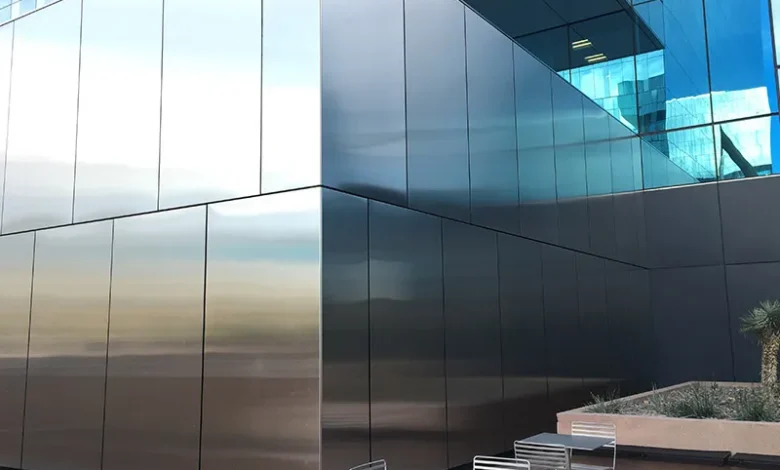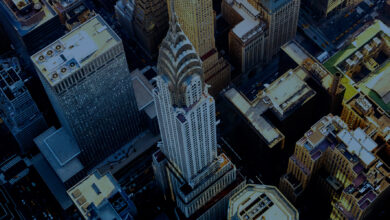Examining Novel Applications of Metal Cladding in Modern Structures

Modern architecture is all about innovation. Architects continually seek inventive methods to expand limits and alter how buildings operate, from elegant skyscrapers to experimental entertainment facilities. One especially appealing option for innovation is the application of metal cladding, an adaptable component that provides both aesthetical and practical advantages. In this section, we’ll look deeper at some of the most imaginative uses of architectural wall cladding in modern architecture, demonstrating how this material is changing how we approach construction design.
Uncovering the Possibilities of Metal Cladding Beyond Facades
While metal cladding has been employed for decades to improve the visual appeal of structures, its versatility extends beyond just facade adornment. Architects are increasingly searching for new ways to incorporate metal cladding into various structural features, including roofs and canopies, internal partitions and display panels. Designers can add aesthetic value and energy to rooms by stepping beyond the box and contemplating unexpected applications.
Metal Cladding as Artistic Expression: Blurring the Lines
Metal cladding transforms into an arena for artistic expression in the hands of a skilful architect. The creative options are nearly limitless, ranging from detailed patterns and geometrical elements to abstract shapes and sculpted components. Designers may create fascinating images that fascinate and inspire by utilizing metal’s reflecting characteristics and manipulating shade and light.
Embracing Sustainability: Metal Cladding for Green Architecture
In an era when ecological consciousness is crucial, architects are switching to environmentally friendly building supplies such as metal cladding to lower their greenhouse gas emissions and harm to the environment. Unlike typical cladding substances like concrete or brick, metal is exceptionally recyclable and may be reused after its lifecycle. Metal cladding systems can also help increase a building’s energy efficiency by offering thermal protection and limiting heat transfer, thus helping achieve broader environmental objectives.
Aligning with Nature: Metal Cladding in Landscape Architecture
Metal cladding in landscapes enables architects to integrate artificial structures with the surrounding environment. Whether used to coat shelters, roadways, or walls of retention, metal may enhance the naturally occurring shapes and patterns of the underlying terrain, resulting in a seamless conversation between the constructed and natural realms. Furthermore, metal’s resilience and weatherproofing make it an excellent choice for outdoor applications, guaranteeing long life and minimal upkeep.
Fostering Interactions: Metal Cladding in Community Settings
Beyond visual appeal and ecological advantages, metal cladding has the potential to promote social interaction and community participation. Architects may bring people together and foster a feeling of belonging and pride in a community or city by designing visually appealing monuments and meeting spots. These architectural innovations can become beloved emblems of communal pride and dynamism, whether a gleaming amphitheatre in an open-air playground or a bustling marketplace hall adorned with bright metal panels.
Expanding Form and Texture with Metal Cladding in Modular Construction
The proliferation of modular building methods has created intriguing new opportunities for incorporating metal cladding in architecture. Designers may achieve high accuracy and management by assembling cladding panels off-site, expediting construction and reducing waste. Furthermore, the versatility of metal enables the fabrication of unique panel designs and materials, allowing architects to have fun with fluid designs and advanced finishes. Whether a modular housing project covered in corrugated metal panels or a short-term pavilion ornamented with porous stainless steel displays, the modular structure provides a varied platform for using metal cladding in architectural design.
Leveraging Technology: Digital Fabrication and Adaptive Design
Advances in digital fabrication and parametric design programs have transformed how architects view the incorporation of metal cladding in their construction endeavours. Designers can use the latest innovations to develop intricate, customized cladding systems suited to each project’s needs. These novel technologies, ranging from computationally created designs to parametrically adjusted panel designs, allow architects to accomplish previously unachievable levels of accuracy and complexity. Furthermore, digital manufacturing processes such as laser engraving and 3D printing enable the production of exceptionally tailored cladding pieces with little to no waste, creating new opportunities for environmentally friendly and resource-effective layouts.
Investigating Material Combinations: Metal Cladding in Hybrid Platforms
Innovative architects are currently investigating the usage of metal cladding in conjunction with different substances to build hybrid facades that provide the best of both worlds. Designers can strike a harmonic equilibrium among industrial and organic features by blending metal’s durability and toughness with the softness and grain of organic substances like wood or stone. By exploiting each material’s specific capabilities, hybrid cladding systems can also provide increased performance, such as better acoustics or fire resistance. Whether it’s a mixed-use project property with metal and timber cladding or a cultural institution with a striking mixture of metal and glass, these hybrid structures demonstrate the limitless imaginative opportunities that material exploration and invention provide.
Metal Cladding in Vernacular Architecture: A Celebration of Cultural Identity
Architects worldwide are reinventing conventional building methods and supplies via the prism of modern layout, leading to an upsurge in metal cladding in vernacular architecture. These designs, whether reviving centuries-old metalworking techniques or adapting indigenous building techniques to contemporary circumstances, honour their regions’ rich cultural past while simultaneously welcoming the opportunities of modern architectural creativity. Using metal cladding in vernacular architecture, designers can pay respect to native expertise and legacy while developing current and adaptable buildings to today’s demands.
Strengthening Community Engagement through Participatory Planning and Collaboration
In recent years, there has been a growing focus on collaborative design approaches, which include communities in influencing their physical surroundings. Architects increasingly incorporate stakeholders in their designs and decision-making stages, allowing locals to contribute their ideas and opinions to create metal-clad structures and open spaces. Designers can collaborate on design concepts, tastes, and objectives through seminars, charrettes, and public meetings, ensuring that the end product represents the wants and goals of the people who will eventually occupy and engage with the space. Architects can use participative design ideas to construct buildings that serve essential functions and inspire community pride and belonging.
Conclusion:
In conclusion, the innovative applications of metal cladding in contemporary architecture are as diverse as they are inspiring. From pushing the boundaries of artistic expression to embracing sustainability and forging connections within communities, architects are harnessing the potential of this versatile material to create architectural wall claddings that are functional, efficient, visually stunning, and socially impactful. As we continue to push the envelope of architectural design, one thing is clear: metal cladding will remain a key player in shaping the skylines of tomorrow.



